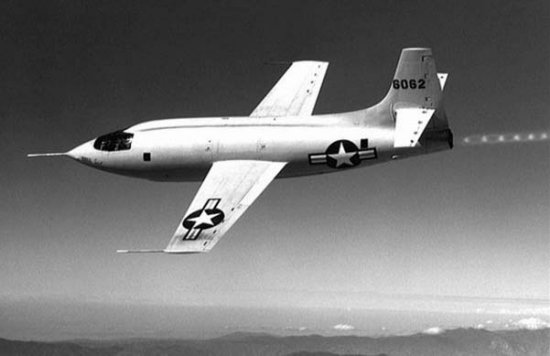|
||||||||||
|
|
||||||||||
|
||||||||||
|
|
||||||||||

An interesting historical sidebar concerns the term "sound barrier." When a British aerodynamicist named W. F. Hilton was interviewed on his high-speed experimental work, he was quoted as describing "how the resistance of a wing shoots up like a barrier against high speed as we approach the speed of sound." The newspapers of the period misconstrued his statement to mean that there was some sort of physical barrier to travel at or beyond the speed of sound, so no aircraft would ever be able to reach those speeds.
In addition, there was some theoretical work done that had indicated the pressures generated on a body as it neared Mach 1 would go to infinity, and the drag would therefore be so great that no aircraft could pass through the barrier. However, these equations turned out to be based of faulty assumptions that were not valid at transonic speeds.
Indeed, engineers had known for many years that the speed of sound could be passed simply because cannon balls and
bullets were known to pass through the sound barrier as far back as Isaac Newton's day. The key to finally
reaching Mach 1 was simply developing ways of minimizing the increase in wave drag at transonic speeds, developing
engines with enough power, and understanding the effect of shock waves on wings and control surfaces so that
control problems could be avoided.
- answer by Jeff Scott, 28 January 2001
Related Topics:
Who was the first woman to break the sound barrier?
Who was the first Brit to break the sound barrier, and when did it occur?
When did Russia first break the sound barrier? Who did it and in what plane?
Who was the first person to fly Mach 2?
Read More Articles:


|
Aircraft | Design | Ask Us | Shop | Search |

|
|
| About Us | Contact Us | Copyright © 1997- | |||
|
|
|||